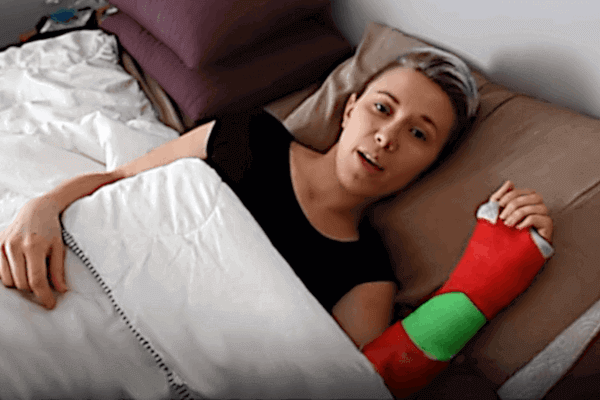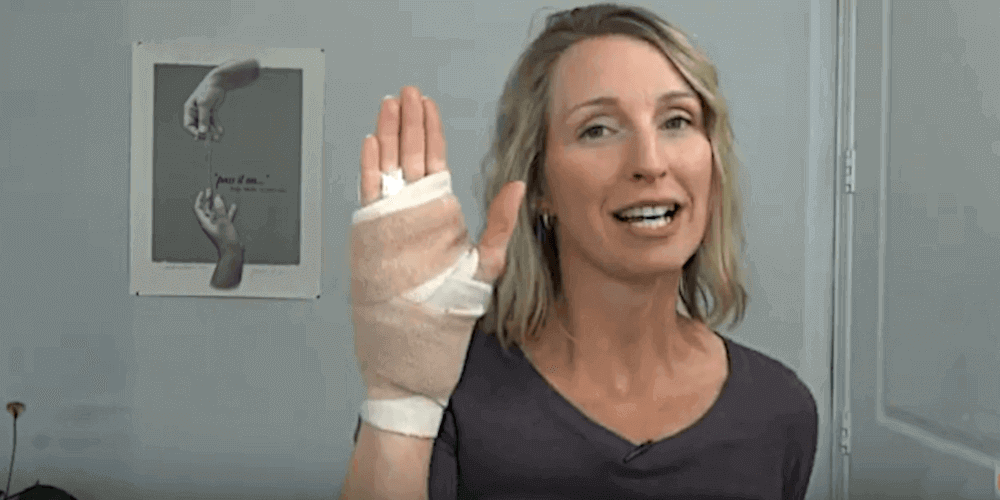Your Carpal Tunnel Surgery Post Op Instructions
From Dr. Z - Carpal tunnel syndrome specialist
Your Carpal Tunnel Surgery Post-op Instructions
Right after your operation, you'll receive a few pages of carpal tunnel surgery post-op instructions. They're important to follow so you can heal fast. So don't lose them!
And when you're discharged from the recovery room to go home, make sure to have the instructions close by so you can review them carefully. Remember, the results of the surgery depend on how well you take care of yourself in the coming days and weeks.
- FIND OUT: do you have carpal tunnel?
No strings attached self-test.
Immediate carpal tunnel surgery post-op instruction
Your doctor may have already emphasized that your carpal tunnel surgery & post-op instructions are equally important. So when you get home, be sure to follow the instructions to the letter.
When you arrive home the
surgery pain may not be so bad - at least for now. That’s because the
anesthesia you had has not worn off completely yet.
But the pain will come.
Taking pain medicines will be discussed completely in your post-op instructions booklet. In a few days, the pain will lessen by itself. But in the meantime:
- Take the prescription pain medicines on schedule as given by the surgeon.
- You might have an upset stomach upon arriving home. That’s probably due to the anesthesia. Eat bland foods until your stomach settles.
- Keep your hand in an elevated position. Keeping it lower than your heart will make it more painful.
- Use an
ice pack on the surgical site to reduce swelling. You should ice it every few hours.
- Ask the surgeon when to resume taking your normal daily medications.
- Sleep with your hand elevated and on a pillow.
- It’s preferable to not bathe for several days. However, if you do, then do not wet the bandages.
- Do not lie in bed. Instead, exercise as much as you can. That includes wiggling your fingers. Just don’t overdo it.
Carpal tunnel surgery post op instruction for the coming weeks
After 1-2 weeks from your carpal tunnel surgery, post-op instructions become a little easier to follow. That's because the bulk of the post-surgical pain has subsided.
In 7-10 days you will return to the surgeon’s office to remove the stitches. The surgical site will probably hurt a little. However, non-prescription medicines like Advil and Tylenol will ease the pain.
Then the surgeon will then give you more instructions to follow for the next few weeks and months of aftercare. During this time, make sure to call your doctor if anything unusual happens.
All carpal tunnel surgery post op instructions will outline key things to watch for. For example, seeing drainage of any kind or having unusual pain should prompt you to call the doctor. Likewise, any discoloration, red streaking or infection should be reported.
Here's what will happen after this visit to the doctor at 1-2 weeks:
- The bandages will be replaced with a splint.
- Keep the splint clean and dry. Wash it at least once a week.
- Even with a splint on, avoid hitting your hand against anything.
- Exercise your fingers according to your therapy schedule. This will insure they don’t freeze up.
- Massage your scar with
vitamin E oil twice a day.
- If you bought a splint from a pharmacy, make sure to remove the metal spine from the palm side. The spine will push on your wrist, causing more harm and pain.
- Follow the rehab and therapy schedule in the instructions. Restoring your hand’s function will depend on your daily commitment to such therapy. You may have to do hand therapy for up to a year.
Returning to work
You can return to work only when you’re able to use your hand well. If you had open release surgery it might take longer than after endoscopic surgery.
Also, do not return to a job that might have caused the carpal tunnel syndrome to begin with. These are called high risk jobs.
If the job involved rapid, forceful or repetitive hand & finger movements then you MUST do something else! That’s what probably caused the symptoms in the beginning. Simply returning to the same job will likely cause the symptoms to come back again. Then, you might need another carpal tunnel surgery as a result.





